Battle In Outer Space (1959)
Directed by: Ishirô Honda
Written by: Jôjirô Okami, Shinichi Serizawa
Starring: Koreya Senda, Kyôko Anzai, Ryô Ikebe, Yoshio Tsuchiya
AKA UCHI DAISENSO, THE GREAT SPACE WAR
JAPAN
AVAILABLE ON BLU-RAY: 16TH NOVEMBER, from EUREKA ENTERTAINMENT, in the ISHIRO HONDA DOUBLE FEATURE boxset
RUNNING TIME: 93 mins
REVIEWED BY: Dr Lenera
It’s 1965, and mankind’s first space station is attacked and destroyed by flying saucers. Elsewhere, saucers lift a rail bridge into the air causing a train to crash into the chasm below, and it’s then reported that disasters have been happening all over the world. Delegates from the world’s nations meet in Tokyo to discuss the crisis, but the Indian ambassador Dr. Achmed is possessed by some alien force which makes him attempt to steal a new ray gun which is being demonstrated by Major Ichiro Katsumiya. When caught, a death ray kills him. It’s discovered that his brain was implanted with a controlling device. Radio transmissions have been detected coming from the Moon, so two rocketships, recently built by scientists from various countries, are sent to investigate, the crew including Ichiro. The night before launch though, one of the astronauts, Iwamura, is also possessed….
Watching Battle In Outer Space yet again [I’ll say right now that it’s a favourite of mine] for the purposes of this review, with hopefully more observant, critical and thoughtful eyes, I couldn’t help but feel a little sad. I was born in 1971, and, bearing in mind that I didn’t see Star Wars until a re-release, if I had seen it at age eight, it would have probably seemed like the best movie ever made to me. Would eight year old boys today, already used to the half hour-long CGI superhero battles in the Marvel movies, be anywhere near as excited? I sadly doubt it, though I always said that, when I had kids, I would make sure they watched as many old movies as new. Well, I don’t have kids, but the act of viewing this second film in Eureka’s Ishiro Honda set still takes me back to a childlike state; light on exposition and characterisation, it’s a fast-paced orgy of naive, toy-like fun in the best possible way which leaves all western space-themed movies of the time standing and which ranks as one of the most sheerly entertaining alien invasion epics, though of course it’s as much a men – or rather people – on a mission film. And I’d also say that it’s a rather important film for Toho; while it wasn’t the first film about extra-terrestrial threat to come from them – that being 1956’s The Mysterians – it proved to be far more influential on later films including some of the Godzilla movies; Destroy All Monsters is almost a partial remake in places. It’s a great shame that it’s not particularly well known or seen; but then I could say the same for the likes of Honda’s Attack Of The Mushroom People and Gorath; Honda most certainly isn’t just about Godzilla..
There seems to be some confusion as to whether this was intended as a direct sequel to The Mysterians or an entirely unrelated story. Some sources say the former, but that only one of the original cast members were available so continuity became increasingly ignored and we ended up with something that is in part a sequel and in part isn’t. Three characters from The Mysterians appear, albeit two played by different people, while folk on Earth show no surprise at evidence of deadly aliens. However, the aliens themselves hail from a different planet called Natal and seem different. Jojiro Okami, who wrote the treatment for The Mysterians, was hired to write another that was then expanded by Shinichi Sekizawa, doing his second Toho after Varan The Unbelievable and soon to be the writer who’d define these movies, into a full script.Again, actual science was nodded to, the Natalian’s anti-gravity weapon inspired by a claim at the time that, if an object’s temperature was zero or below, its gravitational pull night be overridden. And we have actor Yoshio Tsuchiya to thank for insisting that the astronauts walked very lightly on the moon against the objection of others. Not quite the smash hit in Japan expected, its greater than usual number of non-Japanese characters may have helped it become a decent success for Columbia when released on a double bill with the mediocre Twelve To The Moon. I would imagine that many people, after watching Battle In Outer Space which was the first film on the program, would have sat through no more than ten minutes of Twelve To The Moon before gone home. It was left unedited by Columbia except for the music.
We open straight away with some action, with flying saucers destroying the space station. Actually, come to think of it, they’re not really flying saucers, they’re more like flying horseshoes, though we saw them in The Mysterians, and the flash that represents the explosion isn’t really satisfactory – and nor is the bit soon after when we’re shown two other disasters, a ship ripped in half in the Panama Canal and Venice being flooded, by way of paintings that look like the work of an hour’s sketching. The scenes were originally scripted to be shown in full and then they ran out of money, but the shoddy compromise we ended up with is just laughable, and it would have been better if the events had just been mentioned. Never mind, we get the really cool scene where a saucer lifts up a railway bridge causing a train to crash, then the Big Meeting about the situation, but here a great many countries are represented and all seem equally able to have their say. Major Ichiro Katsumiya, Professor Adachi and Dr. Richardson are the main brains, and how convenient is it that a new heat ray weapon is being tested right there in Japan’s Space Research Centre? What’s notable is that the main characters in this film aren’t really seen to have lives; Ichiro gets a brief scene where he looks up at the night sky with his girlfriend, but it’s soon interrupted. This increases the film’s child-like feel – and no, I don’t see that as much of a flaw. After the possessed Ahmed perishes, incredibly quick preparation is made for this mission to the Moon where transmissions have located the suspect aliens on the Moon. There’s a both eerie and poignant moment where our two rocketships pass the remains of the destroyed space station, replete with the sight of a dead body floating in space. In so many science fiction films, space ships are destroyed and that’s it, no debris or nothing.
As our heroes land – in a rather serene and beautiful moment – and head for their destination, things continues to progress at a steady pace. There’s a lengthy sequence of them just walking in on rocks [which is the first of several such scenes in Honda’s films because he was a hiker which may explain why he often put in long scenes of people walking], but Akira Ifukube’s scoring helps immensely and the suspense builds very well. The encounter with the diminutive aliens may have been oddly familiar to 1959 moviegoers because it was repeated verbatim three year later in From The Earth To The Moon, while those helmets look identical to some seen in Return Of The Jedi Indeed touches from this movie seems to have shown up quite often; take the Moon vehicles which are strikingly similar to the ones in Armageddon. The rest of the film certainly delivers the thrills that we have been building up to in spades, being basically two battles, one on the Moon and one on the Earth, but increasing in spectacle and imagination. The climactic sequences of Earth aircraft, which are now equipped to leave the atmosphere, having dog fights with the Natalian flying saucers, were of a kind virtually unseen except for the much more primitive likes of the Flash Gordon serials and must have had viewers of the time on the edge of their seats; I do wonder if a certain George Lucas saw them. Of course Star Wars did this kind of thing better but it was almost twenty years later and Lucas had a far bigger budget. And yes, there’s some destruction, two American cities getting hit with reasonably convincing models of familiar landmarks, before poor old Tokyo [they really do rebuild it incredibly quickly between monster and alien attacks] gets it bigtime with the striking imagery of everything being sucked up into the air.
For 1959, Eiji Tsuburaya’s special effects are outstanding. Hi-Definition does make it impossible not to miss wires above spaceships and having rockets shoot up them more, and of course some of the matting that places characters against backgrounds is very obvious, with some blue outlines around people, but then it often does in very old movies, and an equal number of shots combining live action and models are very impressive. There’s a stunning shot of the two rocketships turning in space to land backwards on the Moon, the Moon in the background and the ships in the foreground; the composition here truly is first class. Ten years later, whilst watching the Apollo 11 Moon landing, Tsuburaya rang cinematographer Sadamasa Arikawa and said, “Our special effects team did a good job, we were right. Now we can hold our heads up before the public”. Even the interiors of the rocketships look surprising similar to interiors of real ones later. We get the second appearance of those fan favourites the Maser Cannons or Markalites, big satellite dishes which shoot lasers. Despite the minimal characterisation, the sight of females on the mission not being purely decorative or servile is pleasing, and we do care when a major act of self-sacrifice is carried out; both the character’s bonkers but rousing heroism and the reactions of others do touch. One can’t help but like the idealism of all the world coming together to help defeat the Natalians. And two other tiny but telling moments definitely show the touch of Honda doing what he could to insert more of a human touch. One is when a young boy says goodbye to his father; the father goes to embrace the son and the son just shakes his hand instead. The other is when the camera lingers for longer than is probably necessary on the face of a woman watching her other half go off to fight.
Honda typically gives proceedings an almost documentary feel despite their fantastical nature and rarely goes for the obvious, for example avoiding any shock cuts when we meet the aliens. Sadly Sekizawa’s screenplay does have some major flaws, perhaps the most notable being the incompetence of the Natalians who tend to hesitate throughout. Ryo Ikebe was a big star of the time but is a bit bland as the lead, and it’s obvious that most of the non-Japanese cast members were not professional actors even if you didn’t know this. But Yoshio Tsuchiya throws himself into the part of the astronaut possessed by aliens, a part he would play again. One of the movie’s outstanding elements is Akira Ifukube’s score, as good as any of his Godzilla work. From the dark, sinister opening march, to the ominous melody of the astronauts exploring the Moon which is a precursor to King Ghidorah’s theme in the Godzillas, to the tender but unresolved theme played over during the ‘romantic’ scene, to the awesome battle march which is a lengthy tour de force of a theme comprised of several elements which also cropped up in some later Toho films including the similarly alien-themed Godzilla adventure Invasion Of Astro-Monster; this score is downright awesome. If you don’t feel like cheering during the final battle when the latter theme comes on you may as well give up on Toho science fiction movies now, which I’m well aware are not for all tastes, though critical respect for them has definitely increased of late, and most people I’ve shown some too have clearly enjoyed them. Battle In Outer Space may not be one of the best, but it has to be one of the most fun. It’s naive, simplistic and even a little goofy despite its serious tone – but what’s wrong with that?
SPECIAL FEATURES
Includes both Japanese and English versions
Battle In Outer Space doesn’t look quite as impressive as The H-Man, but the two main reasons for this are obvious. Firstly, it has a more naturalistic, even duller, look to it, and secondly, it’s full of bluescreen background compositing which always look a generation from than the rest of the film with fluctuation and sometimes tiny white lines and which is considerably shown up by the Hi-Definition format; Jason And The Argonauts is another notable example. But then for lovers of old school special effects it’s rather fun to see the seams and therefore more easily work out how things were done. The image elsewhere is sharp and clean. Most exciting for me was to have proper subtitles for the Japanese version. The Region 1 DVD release had ‘dubtitles’ which, as the name suggests, just translated the English dub, and these were partly though not entirely carried over to the Mill Creek Blu-ray. Eureka have done us fans a real service here, with the dialogue coming across as more serious and – dare I say it – ‘adult’ in tone.
The American release amazingly made no edits to the film except for the music, where Ifukube’s march theme in the final third was replaced by generic B-movie music. Ifukube’s marches often got this treatment, presumably because they sounded too Japanese, though they don’t really. Sadly the dubbing, done by Bellucci Productions instead of Titra Sound like The H-Man and Mothra, isn’t anywhere near as good; the Japanese accents have a mocking tone, and voices don’t even seem to match characters very much.
Original mono audio presentations (LPCM)
English subtitles [Japanese version] and English SDH [English version]
Music and Effects Track
Brand new audio commentary with film historian and writer David Kalat
Kalat returns, and, having more information at hand, provides a talk track that improves on his one for The H-Man. Again, he’s extremely easy to listen to as tells of how film footage from Tsuburaya that recreated the bombing of Pearl Harbour was considered to be footage of the real incident and was therefore seized by American occupying troops, points out a very early computer on screen, and reminds me that Ishiro Honda was often credited as Inoshiro Honda and how one book thought that they were too separate people, the writer obviously unable to comprehend that somebody could work with Akira Kurosawa and also make monster movies. Apparently Battle In Outer Space was greatly influenced by Conquest Of Space which I haven’t seen. Kalat bravely but appropriately closes his track by mentioning the nationwide terror that’s taking place right now and lamenting that the world isn’t coming together to fight it which would have disappointed Honda greatly. I could have done with a little more on the film itself; at one point Kalat digresses into talking about widescreen, but it’s a fine track nonetheless.
Audio commentary with authors and Japanese sci-fi historians Steve Ryfle and Ed Godziszewski
This track was on the Mill Creek Blu-ray and Sony DVD releases, and, as with The H-Man, is even more packed with information and observation – being more film and screen-specific is a major plus – though the two tend to rush to cram in everything they want to say and are only genuinely chatty in one tiny moment when one responds to the other. But we learn so much; that early drafts had versions of scenes that would have made more sense than their substitutions which were done for budgetary reasons, that the aliens were originally intended to be tentacled, and that Tsuchiya claimed that he had to double for another actor climbing a ladder even though we see said other actor doing the climbing on screen. We also hear from Michael Friend who restored this, The H-Man and Mothra for DVD, and even Elpise Richter who played Eloise. Flaws are pointed out too; Ryfle doesn’t think that the march theme works very well [I disagree]. Great stuff.
Stills Gallery
A collector’s booklet featuring essays by Christopher Stewardson and Japanese cinema expert Jasper Sharp (Midnight Eye)
O Card slipcase featuring new artwork by Darren Wheeling
[2000 copies]
Two widely differing offerings from Japan’s greatest director of special effects movies in their best home release versions. Highly Recommended!
Review of Eureka Entertainment’s release of the wonderful ‘Mothra’ coming up in a few hours….it’s vintage Toho sci-fi/fantasy day here on ‘Horror Cult Films’!

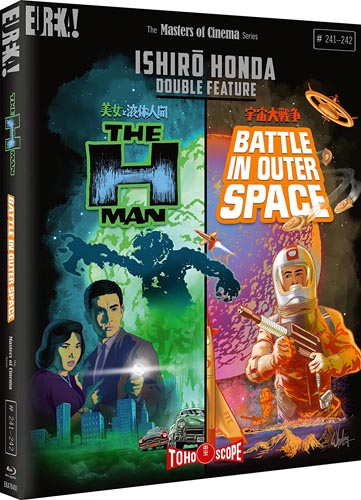
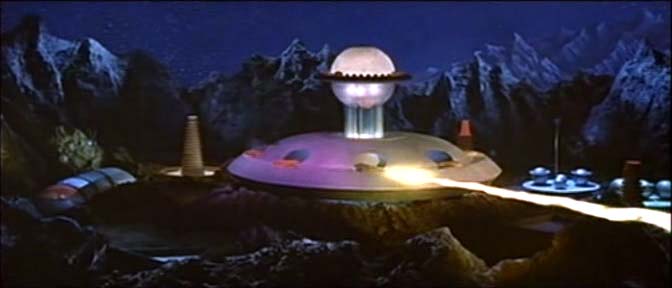
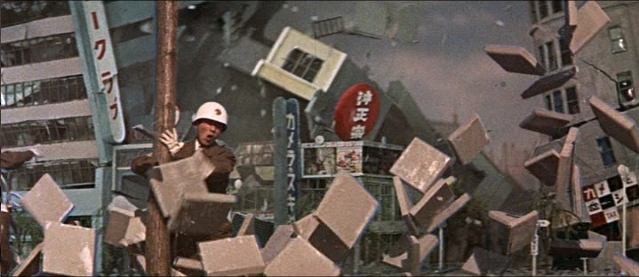




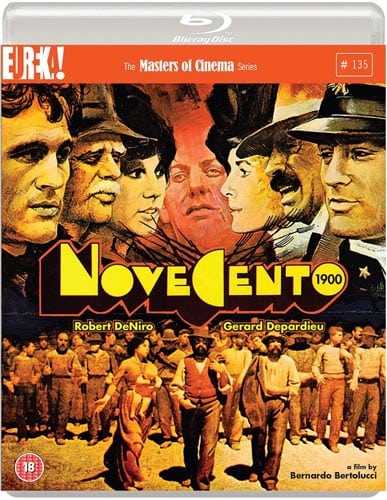
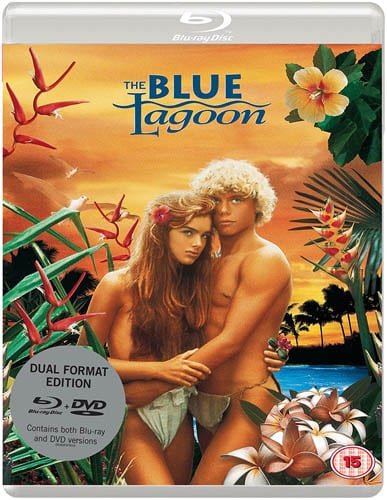
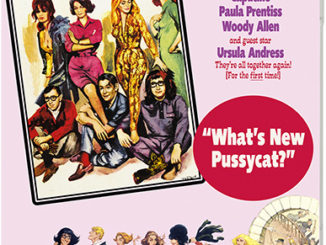
Be the first to comment